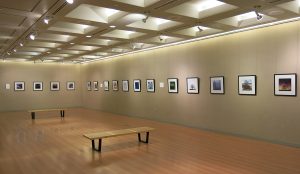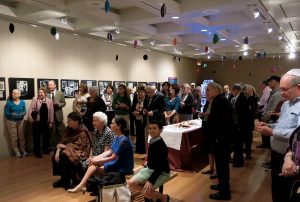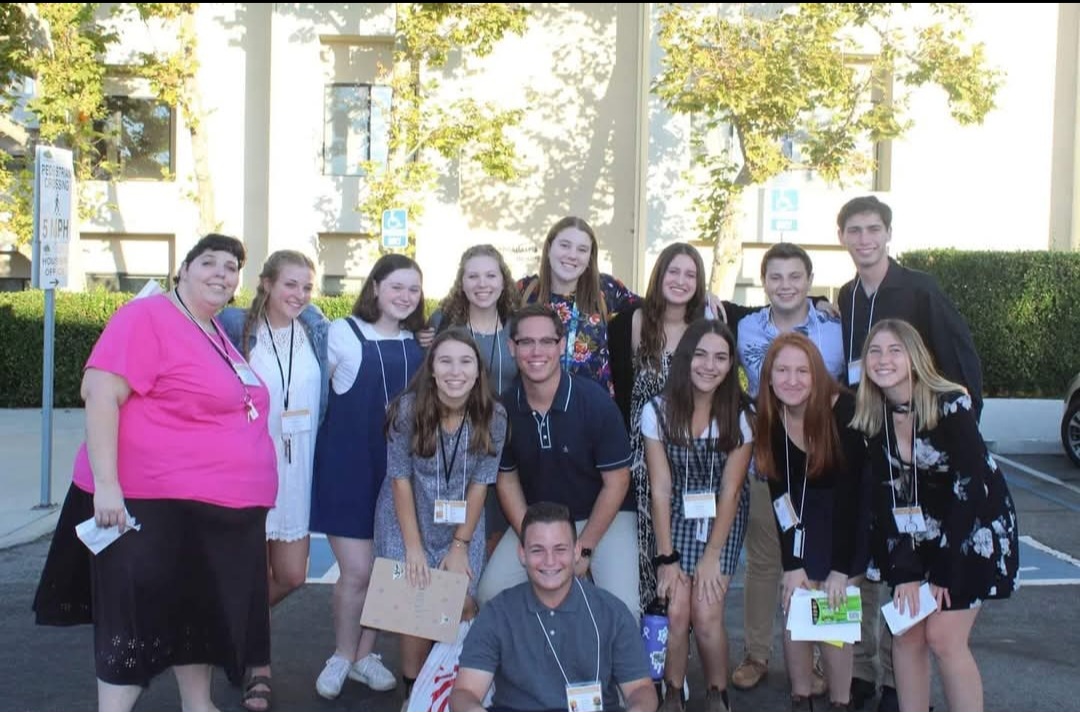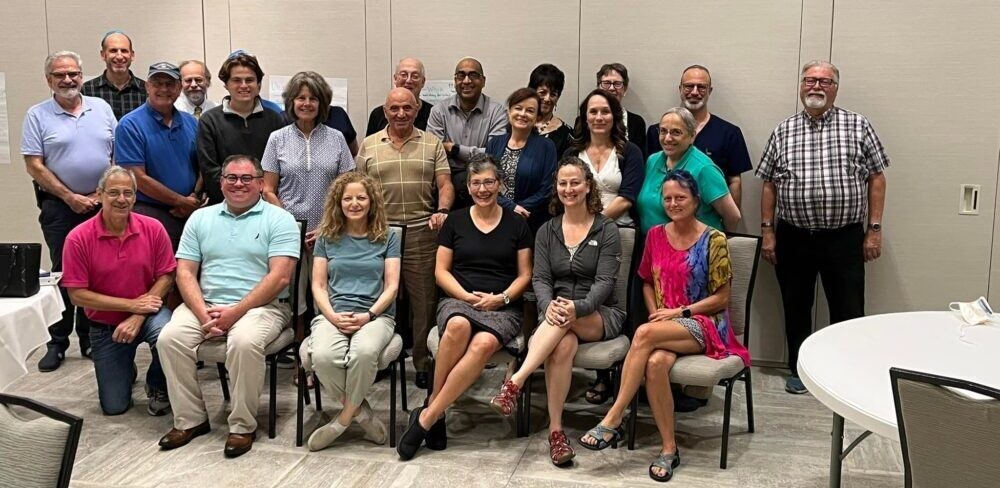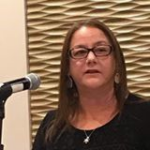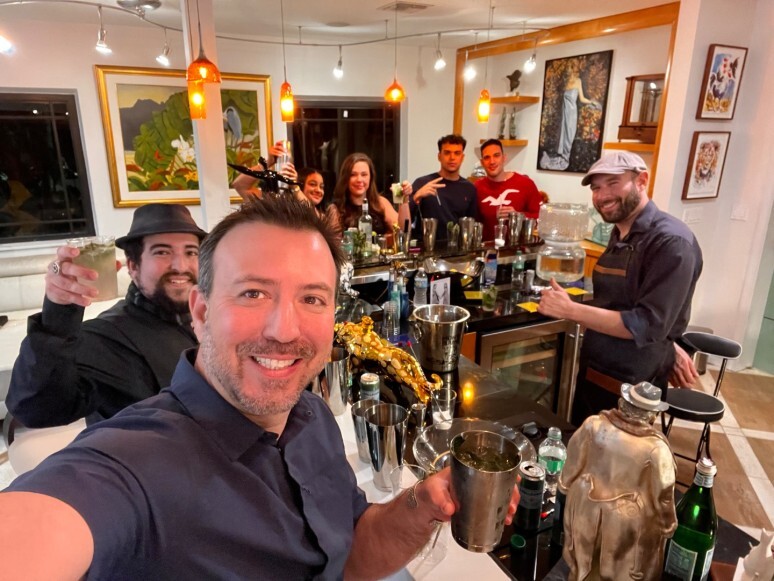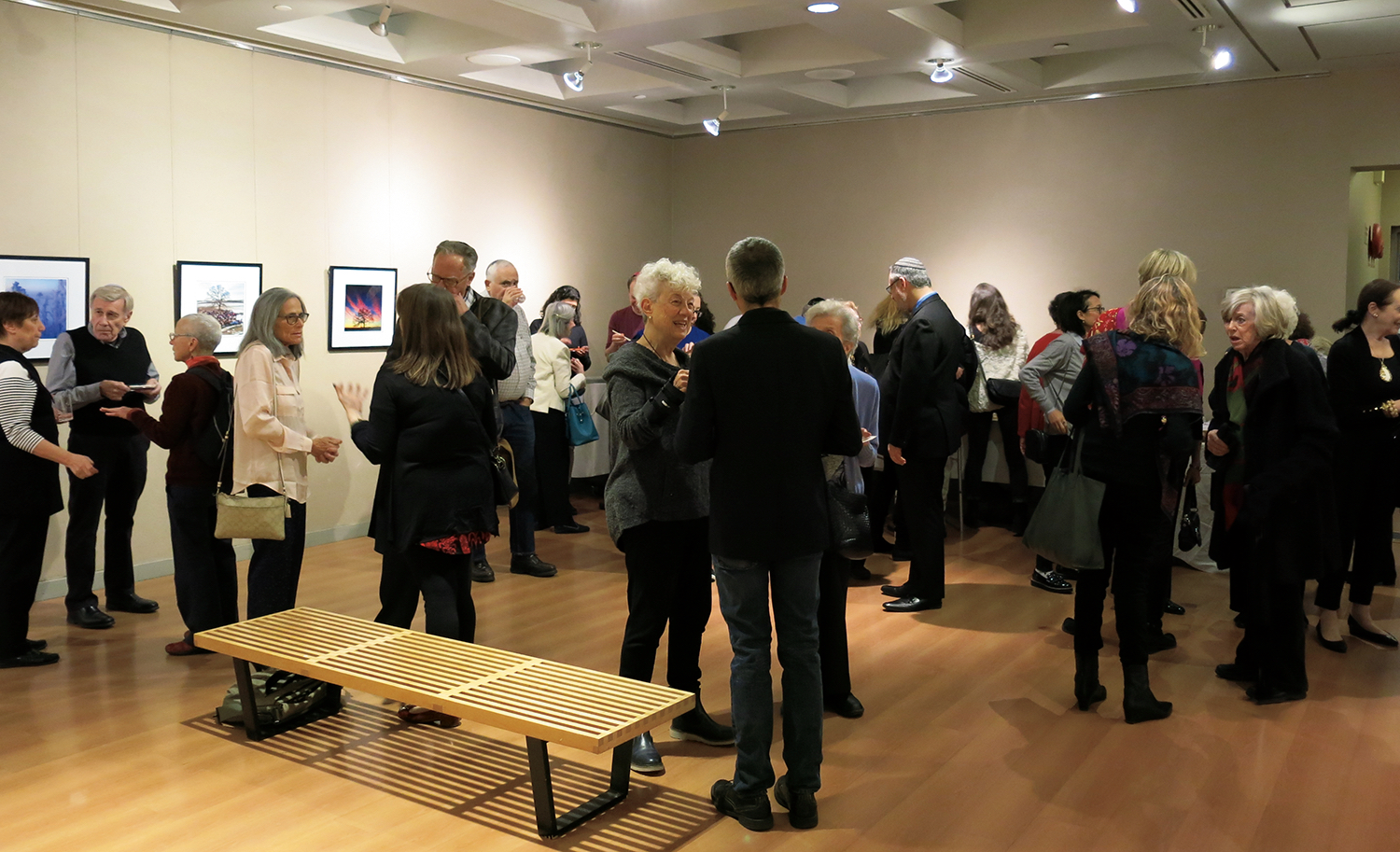
If you walk along the street of New York City on the Upper East Side and you see the synagogue on East 82nd Street, you would be surprised to find out that there is actually a flourishing art gallery within! Thanks to a dedicated group of volunteers that make up the OZ Gallery Committee (as well as experienced professionals from the congregation), Congregation Or Zarua in New York City has been mounting varied and illuminating art exhibitions twice yearly in their synagogue building since 2004. Amazingly, this tradition has been thriving for nearly 20 years.
Bobbi Coller, Ph.D., is the director of the Gallery and heads the committee of ten dedicated volunteers. She is an independent curator, art historian, and art educator outside of the shul and she gladly donates her time to the effort. She recalls the gallery’s humble beginnings: “the story of the vision of the OZ Gallery started with one small object.”
In 2004, the synagogue director at the time purchased a vintage yizkor book from her grandparents’ hometown in Poland. The book was created after the Holocaust to show the once-vibrant Jewish life there. It showed everything from Jewish sports teams to town elders, documenting the rich lives of the Jews that lived in the town. Seeing it inspired Bobbi to ask OZ congregants if they, too, owned heirlooms of Jewish significance.
The response was surprisingly positive and many congregants brought their family treasures to share, along with stories of their beloved relatives who passed them down. The committee paired the objects with family photographs and fascinating oral histories and quickly realized they needed a way to display all the fantastic information and artifacts. They utilized the multipurpose space within their shul, and the OZ Gallery was born. You can read the full story of the gallery, with descriptive pages on each exhibit since its opening, in their 15-year anniversary digital booklet here.
Bobbi explains, “We have proudly named it the OZ Gallery but it’s also the kiddush room, the after minyan room, the Shabbat dinner room, and the place where we have noted speakers at each gallery opening. That’s part of what makes OZ different. Whereas there are many congregations that love to show beautiful objects and art, it’s often Judaica placed in a separate area where few people congregate. Our space is both a large multipurpose center and a handsome art gallery, and congregants see the works and comment on them all the time.
The OZ Gallery has created over 25 different exhibitions since it started and the OZ Gallery Committee stays busy cultivating and curating varied exhibits. Each year, they come up with new themes and focus. Many of the exhibits have followed the format of the first by displaying cultural artifacts that represent the Jewish journey from immigrant to American. They include “From Yankel to Yankee: The Americanization of Jews Reflected in Yiddish Theater and Popular Music,” “Bagels, Babka, and Balabustas: 100 Years of Jews and Food in America” and “Major League Mensches: Jewish Stars of Baseball,” a very popular show that displayed the foremost collection of Jewish baseball memorabilia.
“Not many synagogues maintain an art gallery with changing exhibitions, and fewer, if any, rely on congregants to perform almost all of the work that goes into creating the shows. As a result, we reap great satisfaction in meeting the many challenges of finding works that will delight and inspire in a space that is used for many purposes,” Bobbi states.
The OZ Gallery also cultivates and displays one-person exhibitions and has had the privilege of displaying work by renowned Jewish artists including Arthur Szyk, Mark Podwal, and Barbara Wolff, whose illuminations are in the permanent collection of the Morgan Library. Surprisingly, Bobbi finds that it’s actually easier, in ways, to display one artist’s works and borrow from that source, than it is to collect multiple objects from many lenders.
Two beautiful one-person shows featured the stunning collages and sculptures of congregant, and committee member, Caroline Golden. Her exhibition titled, “Enchanted Spaces” explored fairy tales and their darker foundations. And the exhibition of the works of Rudi Wolff, an OZ Gallery collaborator, artist, and award-winning graphic designer, examined the emotional meaning of iconic Jewish texts. Or Zarua now owns his “Creation” series and still displays it throughout the building.
The Gallery has also shown photography exhibitions, such as one by Rudi Weissenstein, a noted Israeli documentary photographer who settled in Palestine in 1936 and passed away in 1992. His work showcased the optimism of Israel becoming a state. The exhibition was called
“A Young and Hopeful Land.” and many of the photographs were sold to congregants.
Similarly, the photographs from the exhibition titled “That Tree,” attracted a lot of attention. The artist, Mark Hirsch, had taken 365 photographs of a majestic Bur Oak tree, one for each day of the year. The images were interspersed with Midrashic and Biblical verses about trees. Many congregants purchased prints after the show, including Bobbi who asked each of her grandsons which was his favorite image. She purchased those as a lasting memory of the show. The proceeds went back to the artist. For the other exhibit mentioned above, “A Young and Hopeful Land“ since the congregation had purchased the prints, and the artist was no longer alive, the funds went back to the congregation.
“There has been an element of good fortune surrounding this gallery endeavor. Ideas and artifacts seem to magically present themselves just when we think we have come to a dead end,” Bobbi notes.
The combination of the work of the committee, the enthusiastic support of Or Zarua’s Rabbi, Scott Bolton, an avid art-lover, the invaluable help from the Executive Director, Helene Santo, and the pride of the congregation, have enabled this gallery to thrive. When asked about the future of the gallery, Bobbi said they’ll be taking a little hiatus while the gallery space is temporarily being used for other activities.
The digital catalogue notes, “In 2002, when Congregation Or Zarua opened its handsome new building on East 82nd Street, one of the best features was a large gathering room for non-sanctuary events, and they envisioned art on the walls.” Little did they know how impactful and important that space would become, enabling this community to create beautiful, themed art exhibitions highlighting our history and celebrating the creativity and richness of Jewish art.
